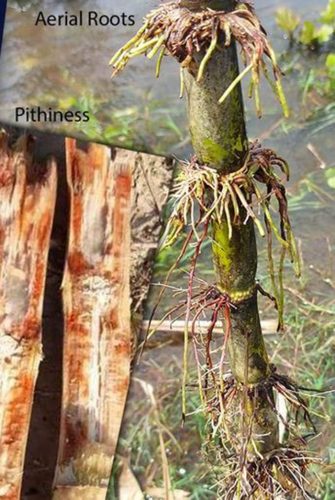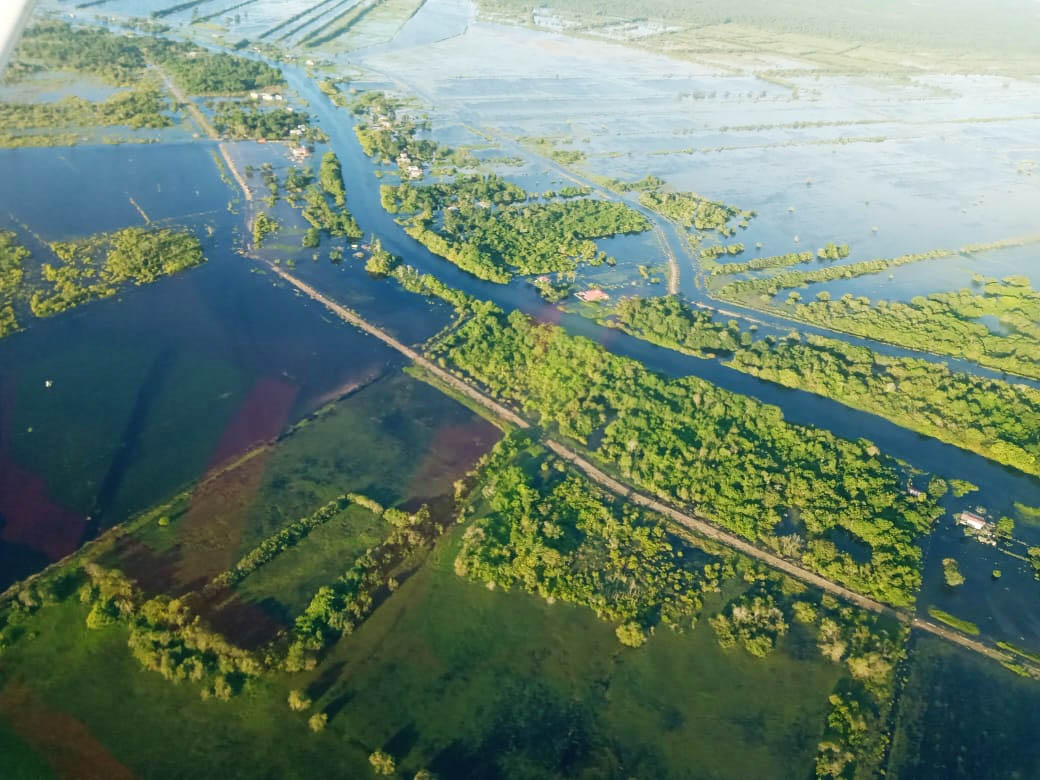Sugar cane that was waterlogged for weeks earlier this year has resulted in the production of a lower quality of sugar at the Guyana Sugar Corporation (GuySuCo).
With more than 30% of the sugar cane destroyed from the mid-year flooding, GuySuCo continues to reel from the impact as it is unable to produce the highest quality of sugar.
Sugar cane that was waterlogged for more than 65 days has resulted in poor yields.

“What we currently have now is light sugar cane. It is not the best of quality and that is impacting production. The canes have no weight,” a source familiar with the crisis at the three grinding estates explained.
Due to the sugar canes being waterlogged for so long the plants are unable to feed off of nutrients to sufficiently ripen and produce the sucrose required. This affects the quality and purity of the sugar currently being produced.
Stabroek News understands also that there is a short supply of sugar cane at the grinding estates of Uitvlugt, Albion and Blairmont. For some shifts there is little or no cane available for grinding.
The weather conditions have contributed tremendously to the decline in sugar production for the current and last crop. This newspaper was told that the three estates had to reduce their production target due to the decline in yields.
“It takes more canes now to produce the amount of sugar we are accustomed to per tonne… the canes in the punts are carrying no weight and that is affecting production,” another source told Stabroek News.
Due the flooding at the height of the first crop, production at the Albion Estate fell short of the target by at least 10,000 tonnes. The estate’s target for the first crop was set at 32,000. The return for the second crop is expected to be dismal, deepening the financial woes besetting the industry and raising further concerns about its future.
“The extended rainfall was so brutal to the sugar industry that on some Estates, the standing canes found themselves under water for more than 65 days even though some 4.5 million tonnes of water was removed from the land daily. This situation has resulted in a mortality rate of 31% of the standing canes at the largest estate – Albion /Port Mourant that produces some 50% of the annual production in 2020,” Threbhowan Shiwprasad, Hutton Griffith and Yudhister Mana, the Estate Managers of the grinding sugar estates explained last month in a letter to this newspaper.
“The depth of submergence, within the range arising from rainstorms, does not affect the crop yield, but the period of submergence affects the weight of cane/sucrose yield (TC/TS) ratio and reduces the value of the crop,” the letter writers pointed out.
“Cane may suffer around 15-20% yield loss after 5 days of submergence, between 30% and 60% yield loss after 10 days and between 37% and 100% yield loss after 15 days,” the letter stated, before adding that the science is clear as to what should have been the expected outcome (greater levels of mortality of the standing cane and a greater deterioration in cane yield and quality, which directly affects the TC/TS).
The TC/TS for 2021 was 13.44 across the industry. This means it takes an average of thirteen and a half metric tonnes of sugar cane to make one metric tonne of sugar.
“What has been observed is that as a result of the excessive rainfalls, the high saturation in the soil and the flood conditions on most of the fields between March 2021 and mid-August 2021; the outcome was a situation where the sugar cane plant was not allowed to sufficiently ripen or store sucrose,” they pointed out by stating, the sugar cane plant survived at the expense of the sucrose from within the stalk because it could not access food from the soil due to the heavy saturation.






